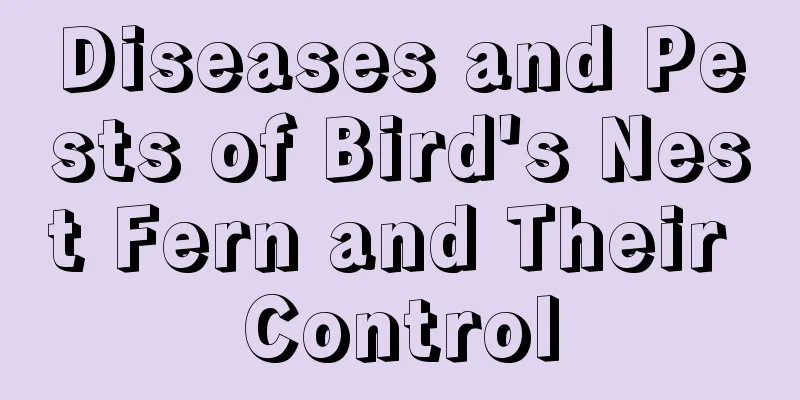Diseases and Pests of Bird's Nest Fern and Their Control

1. Anthrax.Anthracnose is a common fungal disease. When the disease occurs, pink sticky substances will appear on the lesions, which mainly harm the tender leaves of bird's nest ferns. At the beginning, small, nearly circular, dark brown spots that look like water stains will appear on the leaf edges or leaf tips, and then gradually expand from a few spots to large irregular patches, and the color turns into burnt yellow. Some spots will appear cloud-like with light red halos on the edges. After that, the spots will turn grayish white with many tiny black spots. In severe cases, the entire leaf will die. Prevention is the main approach to the control of this disease. Spraying should be done during the rainy season and hot and humid seasons when new leaves are forming. Ensure appropriate temperature, humidity, and good ventilation, keep the leaves dry, and be careful not to introduce diseased plants. Thoroughly remove diseased debris near the leaves of the bird's nest fern to prevent the occurrence of this disease. 2. Brown spot disease.The brown spot disease of ferns is also known as leaf spot disease or leaf blight. It often occurs at the top of the leaves. The affected leaves initially appear as circular black spots, which then expand into circular or nearly circular shapes. The edges of the spots are dark brown, while the center is gray-black with small black spots. After that, the spots will expand rapidly, and the leaves will eventually turn black, dry up, and die. The main transmission route of this disease is fallen leaves. It can occur in spring, summer and autumn, and is more prevalent in hot and humid seasons. To prevent and control this disease, when diseased plants are found, they must be immediately isolated and sprayed with pesticides, or cut off and burned in a centralized manner, while spraying pesticides for protection at the same time. Drugs can be 50% carbendazim 1000 times liquid etc. 3. Nematode disease.Also known as root-knot nematode or root-knot nematode, the pathogen is a white, thread-like, soft-bodied worm with pointed ends. The diseased plants develop brown spots, wilt, and gradually wither and die. Many species of greenhouse ferns are susceptible to nematodes. The prevention and control method is to reduce the damage by removing the affected leaves and eliminating the growth conditions of nematodes. You can use insecticides such as 10% chlorpyrifos or 25% propamiphos for spraying. After applying the pesticide, cover the plants with fresh loess and irrigate with a small amount of water, which can significantly reduce the population density of root-knot nematodes. You can also use hot water treatment to prevent and control nematode infestation in the nest fern. Before planting the nest fern, soak the plant in 43°C hot water for about 10 to 15 minutes. |
<<: Diseases and Pests of Begonia and Their Control
>>: Strelitzia reginae pests and their control
Recommend
The main value of sunflower
Plant Introduction It is a plant of the Malvaceae...
Aloe cutting time and method
Aloe cutting time Aloe vera must be propagated by...
10 tips for successful cuttings
1. Selection of cuttings Cuttings are branches us...
When to plant celery?
Celery generally prefers cool climates and is col...
How to grow spider plants so that they can grow vines
1. Reasonable lighting If you want the spider pla...
When are strawberries planted?
Strawberries are popular for their sweet and sour...
How many days does it take to raise silkie chickens and market them?
Ma chicken is one of the common poultry breeds in...
How long to water succulents after potting
1. How long should I water after potting? It is u...
How to prune cherry trees? Pruning time and technique diagram
Cherry tree pruning time Cherry trees can be prun...
Is crabapple a flower or a tree? How many varieties of crabapple tree flowers are there?
1. Is it a flower or a tree? Crabapple is a tree....
What to do if the flowers of Anthurium turn black
1. Replenish water Reason: When it grows, it need...
Four seasons maintenance method of rubber tree
Spring maintenance Rubber trees are hardy and rel...
Planting methods and precautions of Dendrobium candidum
Dendrobium officinale is generally planted in spr...
How to fertilize Monstera?
How to fertilize Monstera: Its growing season is ...
How to propagate bayberry
Bayberry seed propagation Select ripe bayberry fr...









